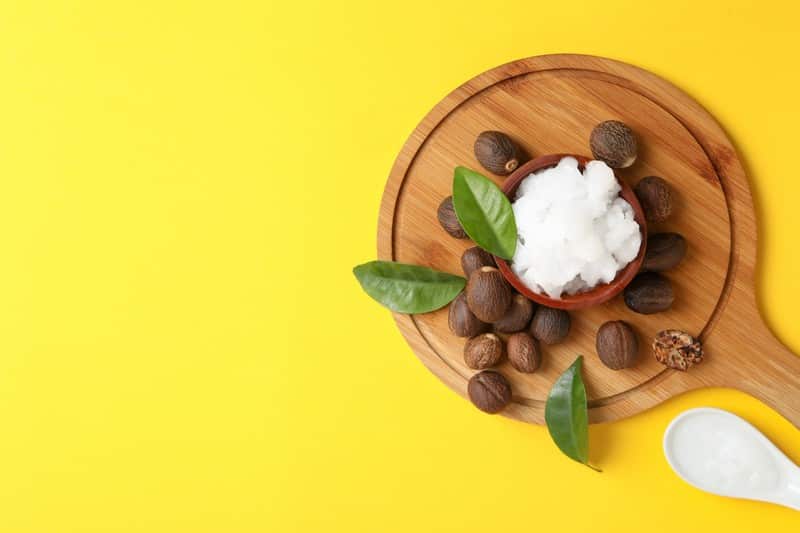Shea Butter

Shea butter is a substance extracted from the nuts of the shea tree, which is indigenous to West Africa. It has an off-white or ivory color and has a nutty smell that decreases over time. If the shea butter smells funky or pungent, it may have been extracted using dirty water, or it could be of low quality and not stored properly.
Shea butter has a high concentration of fatty acids and vitamins. As a result, it has an easily spreadable consistency, making it a great product to soothe, smooth, and condition different skin types. In addition, it doesn’t have much protein, which is good for the skin as it doesn’t trigger infections and allergies. It is also rich in linoleic, oleic, stearic, and palmitic acids, which moisturize the skin and keep it supple.
Shea butter is also an anti-inflammatory responsible for inhibiting cytokines and other inflammatory cells from spreading. It also has a high concentration of antioxidants which is also beneficial to the skin because it can combat oxidative stress, which leads to itchiness, dryness, flakiness, and a general unpleasant appearance.
Dermatologists recommend applying a small amount of shea butter on the affected area after cleansing with gentle skincare products.










